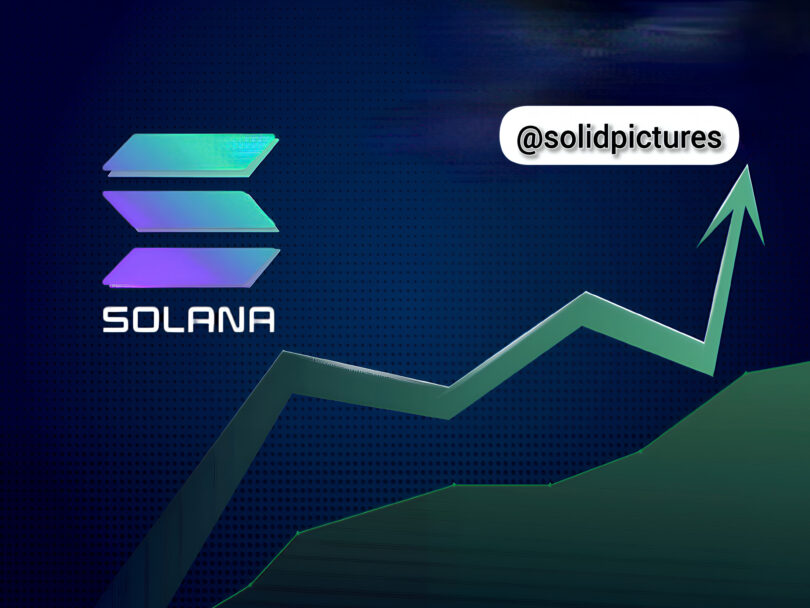Solana is experiencing one of its strongest moments in recent months. The network, once dubbed an “Ethereum killer,” has bounced back with impressive momentum — setting new records in transaction volumes and decentralized app (dApp) activity. As 2025 unfolds, Solana’s renewed strength highlights how next-generation blockchain networks are evolving beyond speculation to real-world utility.
The current wave of growth isn’t just about token prices. Developers are building, institutions are integrating, and the community is expanding. These elements combined are making Solana one of the most talked-about ecosystems in the crypto world. Interestingly, this surge comes at a time when Ethereum is also seeing renewed attention for its scalability upgrades, as discussed in Ethereum’s 2025 Comeback: Why Institutional Investors Are Choosing ETH Over Bitcoin
A Network Built for Speed and Efficiency
Solana’s design has always prioritized speed. With its unique Proof-of-History (PoH) mechanism, it allows for high throughput and extremely low fees — qualities that make it attractive for developers and users alike. The blockchain can handle thousands of transactions per second (TPS), positioning it as one of the most efficient networks available today.
This performance edge has made Solana a preferred choice for developers creating decentralized exchanges (DEXs), gaming platforms, and NFT marketplaces. For users frustrated with slow confirmations and high gas fees on other networks, Solana offers a faster and cheaper alternative.
The Role of New dApps in Solana’s Growth
Solana’s recent momentum is largely driven by the success of innovative dApps built on its blockchain. Projects like Jupiter, Marinade Finance, and Tensor are attracting both retail and institutional attention. These platforms offer advanced decentralized trading, staking, and NFT functionalities — expanding Solana’s role beyond speculation into genuine financial and creative applications.
In particular, Jupiter, a decentralized exchange aggregator, has become one of the leading DeFi protocols in the ecosystem. It efficiently routes trades across multiple platforms, ensuring users get the best swap rates. Similarly, Tensor has revitalized Solana’s NFT scene, with artists and collectors engaging in thousands of daily transactions — many at fractions of a cent.
Institutional Interest and Strategic Integrations
Institutional participation in Solana has also grown significantly. Payment networks and fintech startups are beginning to recognize Solana’s capacity for handling real-time transactions. Recent partnerships with payment providers have introduced faster settlement options for cross-border payments, a step toward integrating blockchain with mainstream finance.
The entry of major developers and venture capital funding has added even more credibility to the network. With new liquidity inflows, Solana-based projects are expanding into areas like tokenized assets, on-chain gaming, and decentralized social media. This trend signals a broad shift toward scalable blockchain ecosystems capable of supporting mass adoption.
Solana’s Ecosystem Expansion
Beyond finance and NFTs, Solana’s ecosystem is branching into multiple innovative sectors. Developers are experimenting with artificial intelligence integrations, gaming interoperability, and multi-chain tools that enable smoother communication between Solana and other networks.
The growth of decentralized physical infrastructure networks (DePIN) on Solana — like Helium — also demonstrates its potential in the Internet of Things (IoT) sector. This combination of speed, versatility, and developer enthusiasm positions Solana as one of the most promising blockchains of 2025.
Comparing Solana’s Progress with Other Blockchains
While Solana’s growth is remarkable, it’s also important to compare its performance with other leading blockchains. Ethereum continues to dominate in total value locked (TVL) and developer activity, while networks like Avalanche and Cardano are pushing into specialized use cases.
Solana, however, has carved out a niche for itself by focusing on speed, scalability, and user experience. This makes it particularly attractive for projects requiring high transaction throughput, such as high-frequency trading platforms or blockchain-based gaming ecosystems.
Market Performance and Token Metrics
From a price perspective, Solana (SOL) has witnessed strong recovery from its previous lows. Its market capitalization has surged, placing it among the top-performing assets of the year. Analysts attribute this to its growing ecosystem activity and positive investor sentiment.
The on-chain data reflects this growth — daily active addresses, trading volume, and new wallet creations are all up significantly compared to 2024. This suggests that Solana’s momentum is not just market hype but backed by genuine network usage.
Challenges and Risks Ahead
Despite its strong performance, Solana still faces challenges. The network has historically struggled with occasional downtime and congestion issues. While these incidents have decreased significantly due to recent upgrades, they remain a concern for developers relying on consistent uptime.
Competition is another factor. As other networks introduce faster consensus algorithms and improved scaling solutions, Solana must continue to innovate to maintain its lead. Governance and decentralization also remain areas of discussion — as the community seeks to ensure long-term sustainability and transparency.
Looking Ahead: The Future of Solana
The future looks bright for Solana as it continues to evolve into a high-performance ecosystem. If its current growth trajectory continues, it could become a leading hub for DeFi, NFTs, and new decentralized applications. Developers and investors alike are paying attention to what Solana achieves next, especially as blockchain adoption accelerates globally.
In the broader crypto landscape, innovation remains the driving force. Articles like Tether’s USAT Stablecoin: How the New Dollar-Backed Asset Could Reshape Crypto in 2025 highlight how stable assets and scalability-focused networks like Solana are converging to form a more efficient digital economy.
Frequently Asked Questions (FAQ)
1. What makes Solana different from other blockchains?
Solana’s unique Proof-of-History mechanism enables high throughput and low fees, setting it apart from slower, more expensive networks. This allows developers to build scalable and user-friendly decentralized applications.
2. Why are new dApps important to Solana’s success?
New dApps bring real utility to the network. Projects like Jupiter and Tensor increase user engagement and transaction volume, proving that Solana can support real-world applications beyond speculation.
3. Is Solana suitable for institutional use?
Yes. Solana’s scalability and low transaction costs make it appealing for institutions exploring blockchain-based payments, tokenization, and DeFi solutions.
4. Can Solana’s growth continue despite competition?
Analysts believe Solana’s growth potential remains strong, provided it maintains network stability and continues attracting developers. Its expanding ecosystem offers a strong foundation for future innovation.







